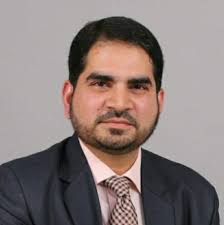Cervical Cancer Awareness and HPV Vaccine: Protecting Both Men and Women
Dr Niti Raizada, Senior Director - Medical Oncology and Hemato Oncology, Fortis Hospitals, Bengaluru Cervical cancer is a significant health concern, affecting women around the world. It is primarily caused by certain types of human papillomavirus

Dr Niti Raizada, Senior Director – Medical Oncology and Hemato Oncology, Fortis Hospitals, Bengaluru
Cervical cancer is a significant health concern, affecting women around the world. It is primarily caused by certain types of human papillomavirus (HPV), a common sexually transmitted infection. However, it’s important to note that cervical cancer doesn’t just affect women. Men, too, play a crucial role in the prevention and transmission of this disease. By understanding the importance of cervical cancer awareness, regular screenings, and the HPV vaccine for both men and women, we can work towards curbing this disease and reducing its impact on individuals and society as a whole.
Cervical cancer is the fourth most common cancer in women globally, affecting hundreds of thousands of individuals each year. The primary cause of cervical cancer is infection with high-risk HPV types, primarily HPV 16 and HPV 18. These types of HPV can be transmitted through sexual contact and can lead to the development of abnormal cells in the cervix, which, if left untreated, can progress into cervical cancer.
It is crucial to be aware of the early symptoms of cervical cancer. These may include abnormal vaginal bleeding, pelvic pain, and pain during sexual intercourse. However, it’s important to note that these symptoms may not always be noticeable, especially in the early stages. Regular screenings such as Pap smears or HPV tests are essential for early detection, as they can identify abnormal cells in the cervix before they develop into cancer. Early detection greatly increases the chances of successful treatment and survival.
The HPV vaccine is an effective preventive measure against cervical cancer and other HPV-related cancers. It is recommended for both males and females to protect against the most common types of HPV that can lead to cervical cancer in women, as well as other types of cancer in both men and women. The vaccine works by stimulating the immune system to produce antibodies that protect against HPV infection.
When discussing the HPV vaccine, it’s important to address concerns about its safety and side effects. The most common side effects of the HPV vaccine are mild and include pain at the injection site, fever, and dizziness. These side effects typically resolve on their own and are outweighed by the significant benefits the vaccine provides in preventing HPV-related cancers.
While the benefits of the HPV vaccine for women are well-known, it is equally important for men to consider getting vaccinated. Men can be carriers of HPV and can transmit the virus to their sexual partners, including women at risk of developing cervical cancer. By vaccinating both men and women against HPV, the overall burden of cervical cancer can be significantly reduced within the population. Additionally, men who receive the vaccine also benefit from protection against HPV-related cancers, such as anal and penile cancer.
It is crucial for individuals to receive the HPV vaccine at a young age, preferably before becoming sexually active, to maximize its effectiveness at preventing HPV infection and related cancers. However, the HPV vaccine can still be beneficial even if received after sexual activity has begun. Consulting with a healthcare provider is essential to determine the most appropriate timing and dosage of the HPV vaccine based on individual risk factors and age.
In conclusion, raising awareness about cervical cancer, regular screenings, and the HPV vaccine is crucial in our efforts to combat this disease. By understanding that both men and women can be affected by cervical cancer and recognizing the importance of vaccinating both genders, we can work towards reducing the burden of cervical cancer within the population. Together, we can make significant strides in curbing cervical cancer and ensuring the overall health and well-being of individuals.






